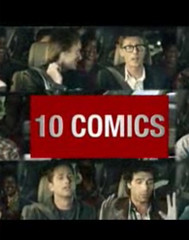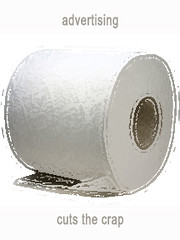BlogTipz, one of several blogs dedicated to blogging, has been running a series on the growing number mobile blogging applications for the iPhone. While the overviews mostly recap the software features, the posts provide a nice round up of applications.
WordPress and TypePad were among the first to provide custom applications. Since Blogger has yet to offer an iPhone application (though it does offer mobile blogging via text messaging or e-mail), BlogTipz suggests Blog It, which is a multi blog and presence application platform offered by Six Apart.
Setting up Blog It via Facebook is easy enough. Setting it up via the iPhone browser takes a little more time, but only because Blog It doesn’t allow a direct connection to Blogger like it does through Facebook. As an iPhone browser application, you have to use OpenID or one of four other account options.
Of course, mobile blogging is easy enough just signing onto Blogger via the browser. So the true benefit, at least from the Facebook version, is that Blog It makes it easy to update multiple accounts, including: TypePad, Blogger, FriendFeed, LiveJournal, Moveable Type, Pownce, Tumblr, Twitter, Vox, and WordPress. Of course, Blog It is still not a replacement for Twitterific (which also has an iPhone applicaton) or Twitter thincloud (browser application) so it’s not really a replacement for presence platforms.
How Phone Applications Impact Marketing
The applications reminded me of a Media Snackers post written back in November. There is little doubt that social media is changing some aspects of communication, especially as applications become simpler and more streamlined.
In less than a week after 2.0 software was released, my dentist concluded that he would be taking all his banking mobile. He also mentioned how easy it was for him to see that that the future of computing will rest in the palm of our hands. Yep. That is the way Apple innovations are steering the industry.
When you add message mobility to the list of six ways social media is impacting communication as I offered up in the Media Snacker post, the most effective communication will trend simple, not complex. In other words, if it takes too long to load on a phone, fewer people will be reading.
Technology isn’t the only driving force for simpler, more direct, and authentic messaging. Consumers are asking for it. As everyone is impacted by more and more messages every day, our patience to wade through long leads is over.
Whereas it used to be only 25 percent of the population wanted cut to the chase, most customers today expect any product contrast points to be delivered up front. It makes sense.
All of us are being impacted by more and more messages every day in every facet of our lives. Our patience to wade through a long lead is gone. In fact, other than a few people who have incorporated the long lead into direct sales-driven Web sites, the only remaining advocates seem to be a few old school direct mail shops.

WordPress and TypePad were among the first to provide custom applications. Since Blogger has yet to offer an iPhone application (though it does offer mobile blogging via text messaging or e-mail), BlogTipz suggests Blog It, which is a multi blog and presence application platform offered by Six Apart.
Setting up Blog It via Facebook is easy enough. Setting it up via the iPhone browser takes a little more time, but only because Blog It doesn’t allow a direct connection to Blogger like it does through Facebook. As an iPhone browser application, you have to use OpenID or one of four other account options.
Of course, mobile blogging is easy enough just signing onto Blogger via the browser. So the true benefit, at least from the Facebook version, is that Blog It makes it easy to update multiple accounts, including: TypePad, Blogger, FriendFeed, LiveJournal, Moveable Type, Pownce, Tumblr, Twitter, Vox, and WordPress. Of course, Blog It is still not a replacement for Twitterific (which also has an iPhone applicaton) or Twitter thincloud (browser application) so it’s not really a replacement for presence platforms.
How Phone Applications Impact Marketing
The applications reminded me of a Media Snackers post written back in November. There is little doubt that social media is changing some aspects of communication, especially as applications become simpler and more streamlined.
In less than a week after 2.0 software was released, my dentist concluded that he would be taking all his banking mobile. He also mentioned how easy it was for him to see that that the future of computing will rest in the palm of our hands. Yep. That is the way Apple innovations are steering the industry.
When you add message mobility to the list of six ways social media is impacting communication as I offered up in the Media Snacker post, the most effective communication will trend simple, not complex. In other words, if it takes too long to load on a phone, fewer people will be reading.
Technology isn’t the only driving force for simpler, more direct, and authentic messaging. Consumers are asking for it. As everyone is impacted by more and more messages every day, our patience to wade through long leads is over.
Whereas it used to be only 25 percent of the population wanted cut to the chase, most customers today expect any product contrast points to be delivered up front. It makes sense.
All of us are being impacted by more and more messages every day in every facet of our lives. Our patience to wade through a long lead is gone. In fact, other than a few people who have incorporated the long lead into direct sales-driven Web sites, the only remaining advocates seem to be a few old school direct mail shops.









































